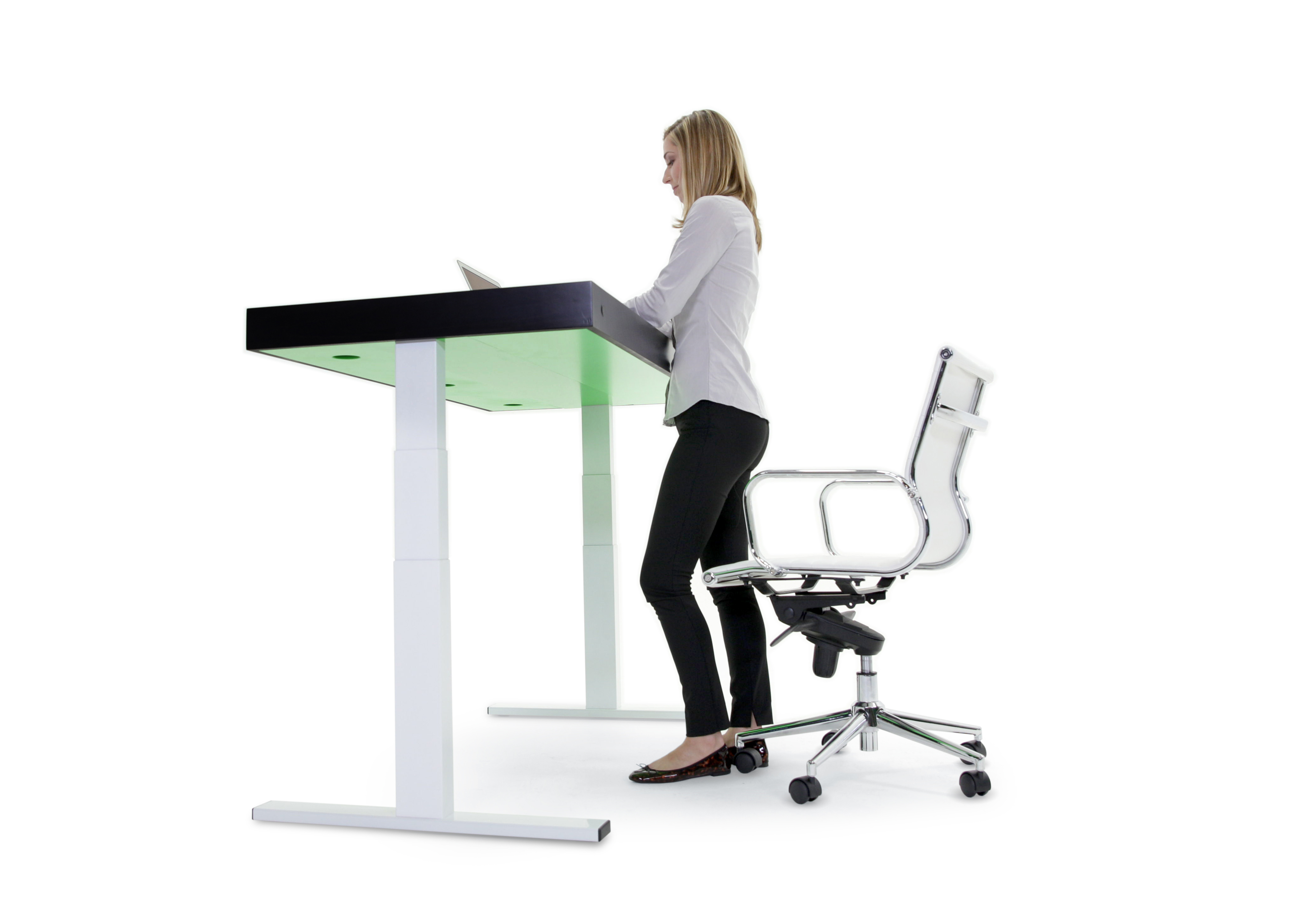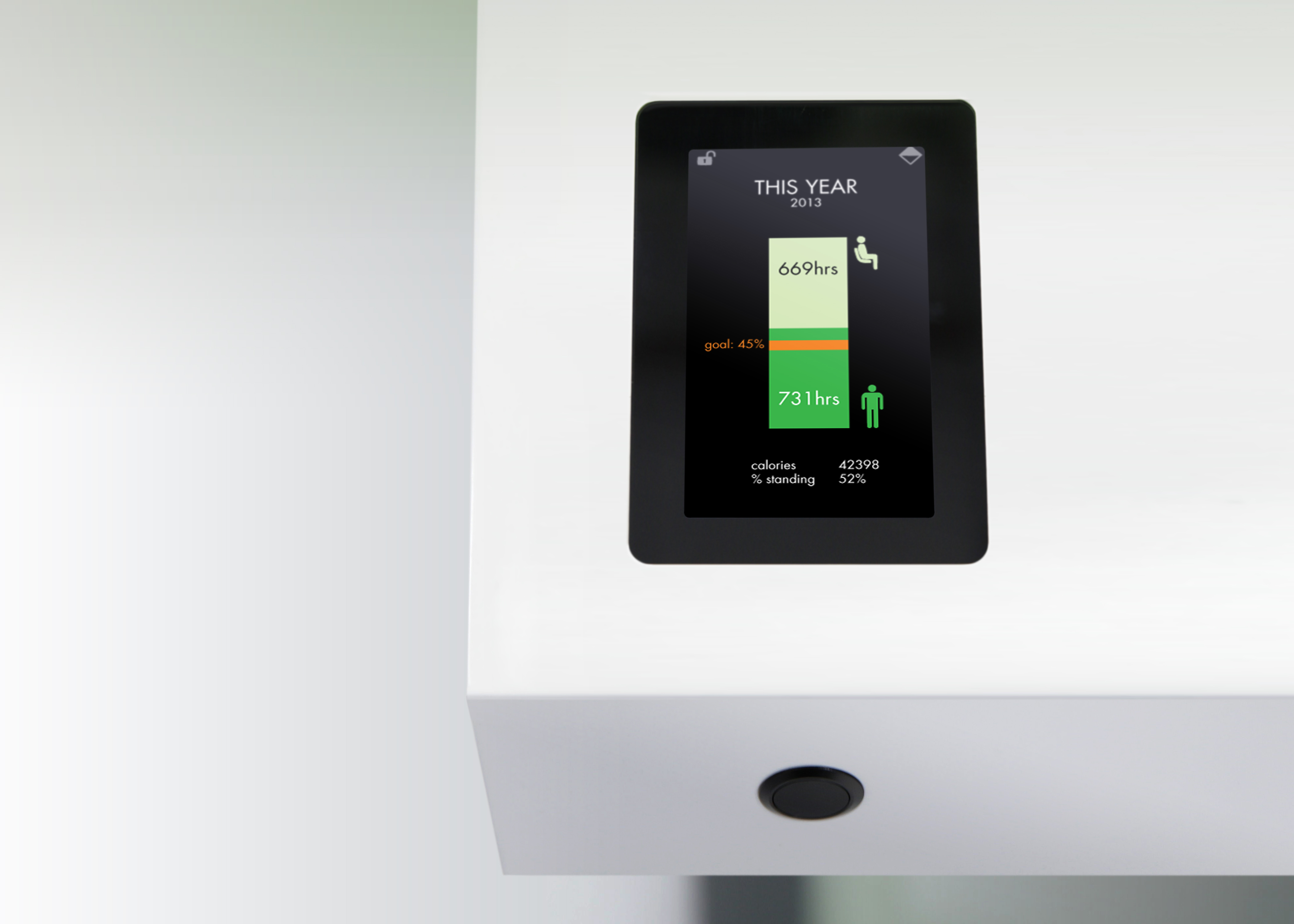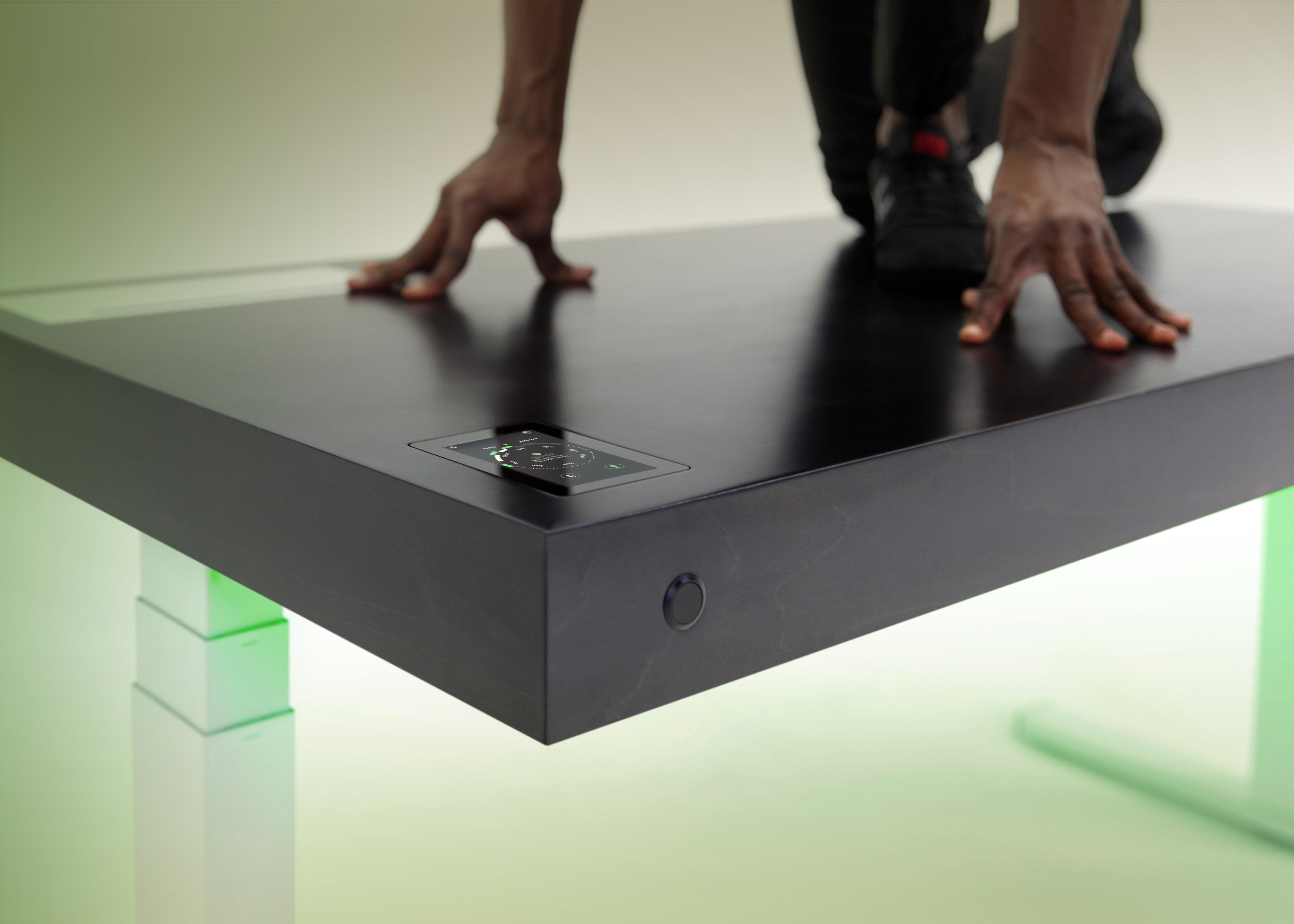Stir Kinetic Desk: Linux-Powered Furniture That's Good For You
The Stir Kinetic Desk promises to be a piece of office equipment for the modern age of sensors, the quantified self, and lots of trans fat. On the other hand, its sticker price may shock you into rigor mortis before obesity will. Check out our hands-on.
The Health And Productivity Benefits Of Standing
Labrosse points out that standing while working is nothing new (many have noted that Ernest Hemingway was known to stand at a shelf, that Winston Churchill and former Secretary of Defense Donald Rumsfeld stood as they worked), and that standing desks have been around for a long time.
But Labrosse also wanted his own research to uncover the impact that standing has on health, productivity, creativity, and innovation. He observed work environments, attended ergonomics conferences (yes, there's such a thing), and evaluated existing products. The data was compelling, frightening even.
I've always felt the urge to stand while working, and I've considered purchasing a stand-up desk. We've got one makeshift solution in Tom's Hardware's Culver City office, but it's nothing fancy, and we're considering purchasing some reasonably-priced models to share in a central area of the work space. The more I read some of the data on the risks of being sedentary, the more I'm driven to encourage this, and to do so at home, Stir or no Stir.
If you want a sobering visual to scare you straight up onto your feet, take a look at the widely viewed infographic called "Sitting Is Killing You." And you don't have to go far to see that medical experts agree.
Let me overwhelm you with more, from Diabetologia's studies of almost 800,000 people, as articulated in a recent New York Times article: those who sit the most have a 112% higher chance of developing diabetes, a 147% higher chance for heart disease, and an almost 50% chance of dying early, no matter if they already exercised with regularity. This study measured all sedentary behavior, including sitting at work, not just watching TV.
Not enough? The BBC did its own study, and one of the findings was that standing three hours a day is the equivalent of running 10 marathons a year in terms of burning fat. The blood glucose levels observed in participants who stood while they worked fell to normal levels after meals.
There's also evidence that the lack of activity induced by sitting at a workstation all day causes muscle fatigue, according to the center for ergonomic research (yes, there is such a thing). This fatigue, the study argues, leads to more work breaks (47% more in the study, and a 288% increase in actual break time) and thus lower output.
Get Tom's Hardware's best news and in-depth reviews, straight to your inbox.
And none of this even touches on the idea of attracting the best employees with creative and comfortable work environments.
One particularly telling finding of Labrosse's research: many organizations that have standing desks report that users don't necessarily use that feature. For one thing, power cables and other peripheral attachments are often compromised when the desk is raised. For another, worker habits often find them in a zone where immersion in a task means employees ignore opportunities to use the desk's features (or to eat, for that matter, or feel any sort of physical comfort at all).
Ultimately these observations fueled the Stir Kinetic Desk design, and the ideas behind the desk's responsive and adaptive capabilities.
Current page: The Health And Productivity Benefits Of Standing
Prev Page From Apple iPod Shuffle To Stir Kinetic Desk? Next Page Is Stir Your Next Desk?-
husker First of all it is not "elegant" at all. It is a rectangle with very crude looking legs that obviously telescope up and down, and don't even hide that crude functionality from showing. There are no curves anywhere, all very heavy blocky shapes which gives the whole thing a very ugly (early) lego-block look. It is no more "elegantly" designed than a folding table at your average yard sale or church banquet. Secondly, all it does it tell you to sit and stand? Why not just have a reminder on your phone or run a computer program that reminds you every so often to sit and stand. Then have a simple desk that you need to raise and lower yourself. It is exercise they are promoting, right? What a complete waste of money.Reply -
f-14 nothing new. i have seen a better version made by some nordic company denmark/finland/sweeden i don't remember exactly, i just remember it was expensive $3k-5k-7k depending if you wanted the hand crank version, the electric push button switch version or the digital version which had automation to make you sit stand or change positions after a certain amount of time.Reply
http://podanys.com/products/sit-stand-desk -
sempifi99 This is very cool and innovative. If the price was affordable I would get one for sure.Reply -
knowom I guess that's not all he learned while at Apple apparently learned all about sticker shock and ways to market overpriced stuff.Reply -
16bit Very interesting, but too pricey to be widely implemented. Unfortunately it looks like I won't be trying out one of these desks any time soon.Reply



